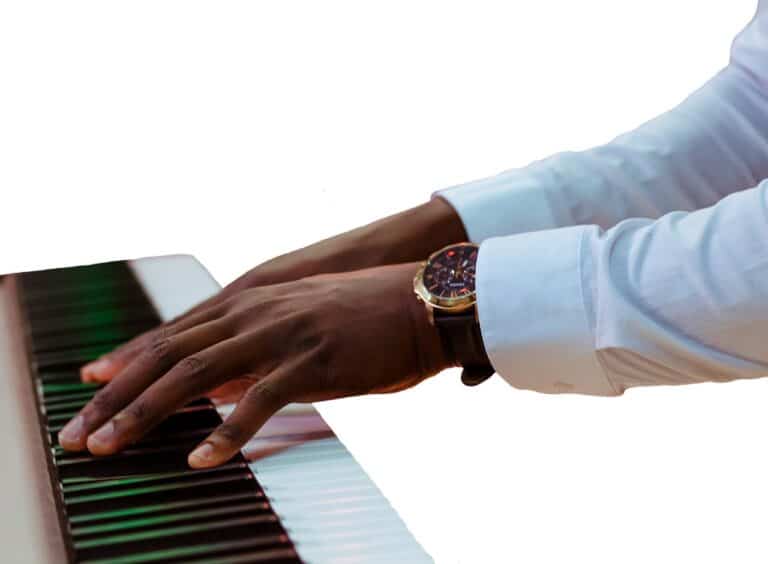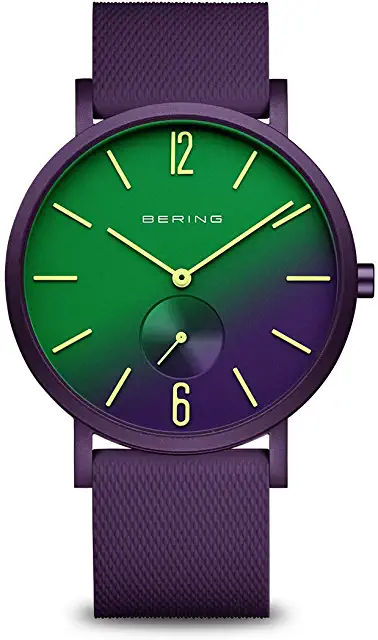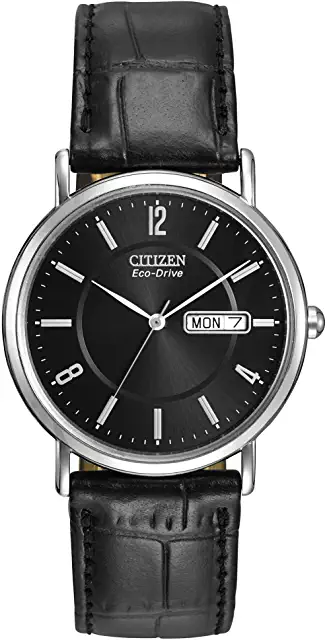Some of us wear watches to do everything, including sports, relaxation, and even while playing musical instruments such as a piano. But to think of it, should you wear a watch while playing piano?
Opinions vary when it comes to wearing a watch to play piano. Some players are used to having some weight on their wrist, so they wear it. Many great pianists wear watches when playing as well. However, some also think watches can restrict wrist movements and may scratch or damage the piano keys.
We have also covered about if you should wear a watch while playing guitar. If this is something you are interested in, feel free to check it out as well.
Pro: Wrist feels naked without a watch
Some pianists think it feels naked and weird when they do not have a watch on their wrist, interfering with the playing.
This makes sense, especially if you are used to wearing watches. You are used to having some weight on the wrist, and without it, movements can feel odd and lack balance.
This can particularly affect piano playing since there might be a situation where the watch-wearing hand might be playing louder than usual.
Pro: Watch as a metronome
Some pianists enjoy looking at the second hand to get a sense of beat before playing, like a metronome.
The beat is set at a tick for a typical quartz movement. The second hand moves once every second. That’s 60 beats per minute.
If the pianist wants a 120 beats per minute beat, he just has to look at the second hand and then calculate inside himself the speed to reach two counts before the second hand ticks.
For these pianists, having a watch is similar to having a metronome that they can access at all times while practicing with their piano. Now that’s convenient.
Pro: Great pianists wear watches while playing
Many great pianists, such as Koji Attwood and the late Billy Preston, wear a watch while playing keyboard based instruments such as piano. So wearing a watch should not be an issue since these maestros do not find it disrupting their play.
Con: Scratches piano/watch
Some pianists take off their watch because they worry that their watch will scratch the piano keys.
In fact, it is possible to imagine hard playing might make the watch hit the piano, either causing a knock mark on the piano or ding on the watch itself.
The likelihood of this happening might be higher if the watch is worn with a bracelet. As metal bracelet links are hard, the impact would be much more severe on the keys.
This would ruin the appearance of the piano and the watch itself.
Con: Noise
Some pianists see the need to take off the watch since the watch may make noise that will ruin the sound experience of playing the piano.
Metal bracelets on watches could jangle about and make noises, not to mention the possible sound produced when the metal bracelets touched the piano keys or any part of the piano.
Con: Restricts movement of the wrist
Piano playing requires ample wrist flex to balance and smooth out sound dynamics.
Watches may interfere with this since they sit on the wrist.
This is why some pianists do not wear watches while playing the piano. There is a tendency to take off the watch and place it on the piano instead before playing.
Perhaps the decision to wear a watch or not to play the piano goes down to personal preference. You can still play the best piano possible with or without it.
What Watch Is Suitable For Playing The Piano?
Watches that suit a pianist should be light, small, thin, has a soft strap and runs on quartz movement. Light and thin watches ensure minimal interference with hand movements. Soft straps such as leather reduce possible damage on piano keys, and quartz movements will be less impacted by hard playing.

Thin, Small & Light
When playing piano, hands and fingers fly, glide, and even cross each other. This means the hands need to be given maximum space to move about.
As a result, thick and larger watches such as dive watches might not be suitable. Chronograph watches are also a bad idea. They usually come with extra pushers on the case, which might get caught on the shirt cuffs or knock on the piano keys.
Light watches would also be more suitable since they do not pose additional weight to the wrist. That means the wrist can flex, move and bring out better sound dynamics while playing the piano.
Quartz Movement
Automatic watches run on a finely tuned balance wheel, which may be susceptible to sudden shocks. This is even so if the movement does not have shock absorbers installed.
The hands and fingers may play in ‘short and sharp notes’ to deliver a staccato effect when playing the piano. Playing in this manner sends shocks that may vibrate from the fingers to the wrist and the watch.
In fact, some pianists do mention how their automatic watches lose or gain time after playing on the piano.
Perhaps quartz movement would be better for piano players.
A quartz movement runs on an electronic system and is less susceptible to sudden shocks. Quartz watches are also more suitable for use as a metronome since the ticking movement on the second hand indicates a standard 60 beats per minute.
A pianist can then use that to signal the right beat in himself.
Soft Strap
One of the biggest concerns about wearing a watch while playing the piano is that the watch may either scratch or leave knock marks on the piano keys.
This concern is significantly more pronounced if the watch has a metal bracelet.
A soft strap such as leather would negate this since if there is a contact, the leather strap will absorb the impact better.
Best Affordable Watches To Play Piano
The five best affordable watches while playing piano are:
- Timex Easy Reader
- Casio W201-1AV
- Nixon Time Teller
- Bering True Aurora 16940-999
- Citizen BM8240-03E
These watches were selected after taking into account the factors that will make a watch suitable for piano playing, which are:
- Thin and small
- Light
- Runs on quartz movement
- Has a soft strap
Timex Easy Reader
This iconic American watch works perfectly with the piano. Who would have guessed that?
This watch is 35mm in diameter, small, and suits most wrists. It is powered by a quartz movement. The watch is mated to an 18mm genuine leather strap that should be soft to absorb impacts from piano playing.
The watch also has a small crown, making it less likely to knock or get caught on the piano keys. 30M (99ft) water resistance.
Casio W201-1AV
This watch is essentially a trade-off. You will trade off the soft leather strap for a harder resin strap in exchange for totally eliminating the watch crown.
The resin strap should be soft enough after some break in, protecting your piano keys. Without the watch crown, you can be assured that it will not knock on your piano keys.
The watch is digital, so you will need to observe the seconds digit changing to use it as a metronome. It is also 36mm in diameter, small, thin, and light for piano play. The quartz movement should withstand shocks well.
Swatch New Gent SUOB705
If you want a larger watch dial and are snobbish enough to insist on nothing but Swiss watches on your wrist, consider this Swatch instead.
It is 41mm and has plastic with a rubberized coating case and a silicone strap. This means almost all watch surfaces are soft and should not damage your piano keys on impact. The crown is also small.
The watch runs a Swiss quartz movement, with 3-hands indicating the hour, minutes, and seconds. The second hand makes a great metronome, while the white dial blends well with the white piano keys.
Bering True Aurora 16940-999
If you want something that fits piano playing yet is colorful and fun, then the Bering True Aurora should fit you.
The watch case is aluminum, which means the watch should be lighter on the wrist. The strap is silicone, even softer than leather, for maximum piano keys protection. The watch is also running on quartz to keep better time.
ALSO READ: Does Bering Watches Have Batteries?
Citizen BM8240-03E
Perhaps the most exquisite looking of the bunch, this watch would do well on your wrist during recitals and performing on stage.
The 36mm case with Citizen’s Eco-Drive quartz movement ensures good timekeeping. The black leather strap is soft and protects your piano keys, while the black dial does not distract you or your listener’s attention as you play.
A smooth crown shape also reduces the likelihood of it being caught in your shirt cuff or piano keys.
ALSO READ: Citizen Watches Review





